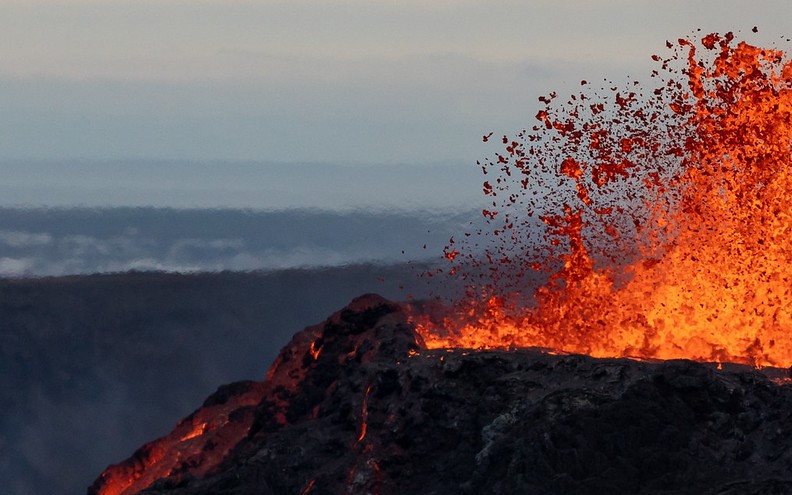
Newly discovered tools at Cornell University have led scientists to a fresh understanding of what causes volcanoes to erupt. While geoscientists used to believe that water and shallow magma were the main triggers, this new research reveals that explosive basaltic volcanoes can be set off by gaseous carbon dioxide.
A recent model proposes that basaltic volcanoes, which are usually found inside tectonic plates, get their supply of molten rock from deep within the Earth’s mantle. This molten rock is stored around twenty to thirty kilometers beneath the Earth’s surface.
The study, which provides a better understanding of the inner workings and makeup of our planet, has important implications for enhancing the way we plan for volcanic hazards.
It was published on August 7, 2023 in a scientific journal called the Proceedings of the National Academy of Sciences.
High precision carbon dioxide densimeter
Roughly four years ago, Dr. Gazel and Charlotte DeVitre, who completed her Ph.D. in 2022 and is currently a researcher at the University of California, Berkeley, created a specialized tool.
This tool, called a high-precision carbon dioxide densimeter, measures how tightly packed a substance is in a small container. It was designed to work with a device known as Raman spectroscopy, which uses a microscope to study scattered light particles.
Tiny samples from nature—microscopic bubbles filled with carbon dioxide that is trapped in crystals released during a volcanic eruption—are carefully studied using Raman spectroscopy and the recently invented densimeter.
This approach allows scientists to investigate a minuscule time capsule that holds information about the history of the molten rock. The innovative method is crucial for accurately estimating how much magma is stored underground in almost real time.
It was put to the test during the eruption in Las Palmas, Canary Islands by Gazel’s research team in 2021.
How does laser heating impact the crystals?
The researchers created techniques to understand how laser heating impacts the carbon dioxide-rich pockets enclosed within the crystals. They also devised ways to precisely measure the volumes of the molten material trapped within the crystals and the bubbles themselves.
Furthermore, an experimental method involving reheating to enhance accuracy was introduced. This method is especially useful in accounting for carbon dioxide that is trapped as carbonate crystals inside the bubbles.
Findings of the investigation
Employing these recently developed instruments, the researchers closely examined remains left behind by volcanic activity at the Fogo volcano in Cabo Verde, situated to the west of Senegal in the Atlantic Ocean.
Their investigation revealed that tiny pockets of molten material encased within crystals made of magnesium-iron silicate contained a significant amount of volatile substances.
Volcan Masaya is one of Nicaragua’s most active and unusual volcano which lies within the chain of volcanoes along the Central America subduction zone. This dominantly basaltic volcano has produced the odd explosive eruption as well as hosting lava lakes. pic.twitter.com/kVd0Oq6NY4
— pozz_iz (@Pozz_iz) October 28, 2020
The elevated presence of carbon dioxide within these crystals indicated that the molten rock was stored at depths of tens of kilometers beneath the Earth’s surface, specifically within the Earth’s mantle.
The team uncovered a link between this phenomenon and the deep-seated source within the Earth’s mantle that provides material to these volcanoes. This finding suggests that volcanic outbursts like the ones observed at Fogo volcano initiate and receive their sustenance from the mantle.
This mechanism bypasses the conventional storage within the Earth’s crust and is propelled by carbon dioxide located deep beneath the surface, as outlined in the research paper.
Gazel emphasized that understanding how magma is stored underground is essential for effectively preparing society for upcoming volcanic eruptions. He is also affiliated with the Cornell Atkinson Center for Sustainability as a faculty fellow.
See all the latest news from Greece and the world at Greekreporter.com. Contact our newsroom to report an update or send your story, photos and videos. Follow GR on Google News and subscribe here to our daily email!



